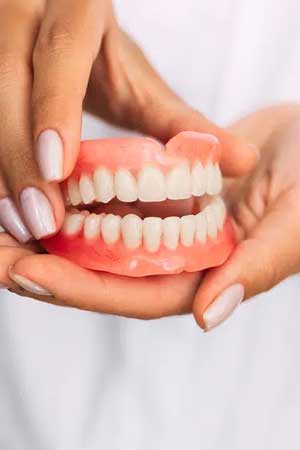X
Locations
Madhapur Plot No, 172, Rd Number 9, Ayyappa Society, Chanda Naik Nagar, Madhapur, Hyderabad, Telangana - 500072 Gayatri Nagar Plot no 298, beside sbi bank, Gayatri Nagar, Allapur, Borabanda, Hyderabad, Telangana - 500018 Miyapur H.no 1-258, opposite IndusInd bank, miyapur X Road, Miyapur, Hyderabad - 500049 Madhapur H.no: 2-56/23/15/5, ground floor, sainagar,madhapur, Hyderabad - 500081Complete dentures are replacement teeth or tissue-supported prosthesis which are placed after the extraction of the teeth. This artificial tooth consists of two sides. They are artificial teeth and denture bases. The artificial teeth restore the appearance and the dental base serves as the foundation to restore the soft and hard tissues. Complete dentures are removable and cover a larger space of oral mucosa. They are supported by the underlying bone, gums, and soft tissues.
Procedure
- The first is the fabrication process. It is about preparing a new denture that assembles the primary impression of the upper and lower ridges of the patient.
- After taking the final impression, the border moulding is carried on. This helps note the cheeks and soft tissue movements of the mouth. It also helps dentists to calculate the retention and stability rate of the denture.
- After border moulding comes the final impression making step.
- In the absence of teeth, it is difficult to determine the position of the jaws. So, a jaw relation is used to fix the denture in the mouth. After the adjustments are made, the biting and speech test is conducted by the dentist.
- When the final dentures arrive, it is ready for use. And it will surely take some time for patients to adjust to the new dentures.
Benefits
- Complete dentures are made up of composite resins that are available for low cost.
- They are easy to repair and fix in the mouth.
- Complete dentures improve the appearance of the face and speech. Eating and chewing becomes normal.

